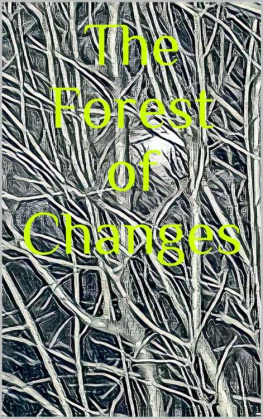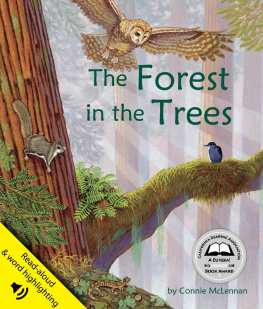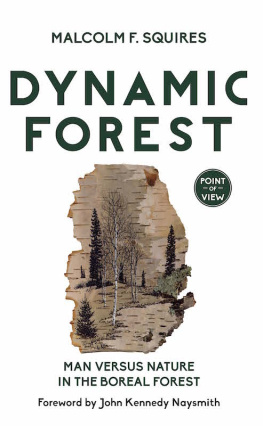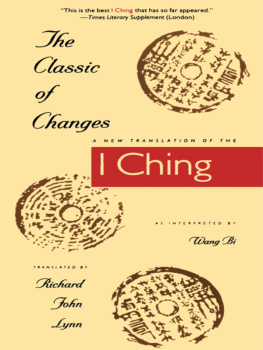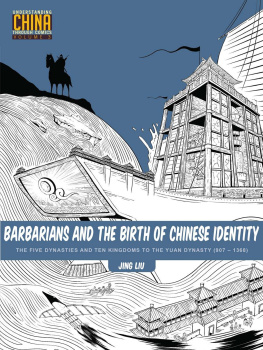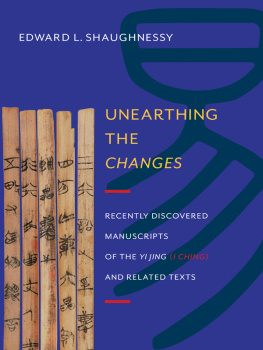The Forest of Changes Jiao Shi Yi Lin () A Han Dynasty Extrapolation of the I Ching Translated from the Chinese by Christopher Gait I leave to various futures, but not to all, this, my garden of forking paths. Jorge Luis Borges Version 2.1 Copyright 2016 - 2021, Christopher Gait Translators Preface Acknowledgments About the Forest of Changes Dating the Text Themes in the Forest Conventions Duplicate Verses Merchants History as a Language in the Forest of Changes On the Yi Jing Notes on Divination Divination, Fate and the Confucian World View A Cast of Characters for the Forest of Changes 1 Originating 2 Completing 3 Sprouting 4 Youth 5 Waiting 6 Contention 7 Hosts 9 Small Limits 10 Treading 11 Arising 12 Declining 13 People Together 14 Great Possessions 15 Humility 16 Excitement 17 Following 18 Restoration 19 Pressing Forward 20 Contemplation 21 Biting Through 22 Adornment 23 Collapse 24 Returning 25 Wronged 26 Great Restraint 27 Hunger 28 Excess 29 Water 30 Fire 31 Intermingling 32 Perseverance 33 Retiring 34 Pushing 35 Striding 36 Dark Times 37 Family 38 Alienation 39 Constricted 40 Released 41 Increase 42 Decrease 43 Judged 44 Encounter 45 Congregating 46 Ascending 47 Oppression 48 Wellspring 49 Revolution 50 Cauldron 51 Quaking 52 Stillness 53 Graduation 54 Rejection 55 Establishment 56 Wandering 57 Penetrating 58 Joyous 59 Dissolution 60 Discipline 61 Contemplation 62 Small Exceeds 63 Completion 64 Continuation Bibliography
Translators Preface
This translation, like the translator himself, is a bit of a linguistic mongrel. A rigorously prepared academic translation of the Forest of Changes is needed. The work would contain variant translations drawn from all the main Chinese editions with copious notes on variorum. This book is not that work; but it is the first full translation of the Forest of Changes into a western language. My background and education is not that of a Chinese translator.
Although I have studied the Yi Jing all my life and studied Classical Chinese for the last fifteen years, I am only professionally qualified to translate Russian. However, I think that the book you hold has merit. I have used several modern Chinese translations along with the original Han Dynasty text and sought out the interpretations of the sometimes obscure verses of the Forest to create this translation. The Forest of Changes can be used both by students of ancient divination as well as Chinese history and culture. The book is a marvelous window into Han culture, Confucianist and folk traditions and history. My work used a very modern phenomenon, and one that is bound to grow by leaps and bounds in the next decade--computer assisted translation.
I used the Pleco translation application loaded up with a full armory of dictionaries (including the Grand Ricci, the Hanyu Da Cidian {Comprehensive Chinese Word Dictionary}, and A Students Dictionary of Classical Chinese, among others). I made heavy use of the Chinese Text Project and Thesaurus Linguae Sericae, both invaluable online sources for Chinese classical studies. It is my heartfelt hope that the work will help people get some insight into the Forest of Changes and give scholars an incentive to take my humble stub of a work and develop it into a proper study of this fascinating and puzzling book. When I took up the study of the Yi Jing some 40-odd years ago I decided that I wanted more. I expanded the 64 figures of the ancient classic into 512 figures and attached verses to each based on my feeble understanding of how the Yi Jing was originally composed. The project was thus similar to the Forest of Changes in some ways, though I did not learn of the Forest until some ten years ago.
That primitive oracle of my youth was the Yellow Kings Garden, a phenomenally poor work. But I did learn some valuable lessons about oracle texts and their composition. I have tried to bring that knowledge, and the other scraps of useful information acquired in life, to this translation. I dedicate this work to my parents, John and Susan Gait. Memory eternal! Nokesville, VA, May 11, 2016
Acknowledgments
My wife Elena, whose unfailing support and patience inspired and assisted me. Mike Love, creator of Pleco, the best computer assisted translation system available.
I could not have done this translation without Pleco. The Chinese Text Project, which was a powerful search tool to find citations and repetitions of text both within the Forest and in the entire body of Han and pre-Han literature. The Thesaurus Linguae Sericae at Heidelberg University, an invaluable source of translations in context with phrases clearly marked with their period of use. The Clarity I Ching discussion forums and the old Hexagram-8 mailing list, particularly Harmen Mesker, Luis Andrade, Robert Matusan Boyler and Hilary Barrett. Wikipedia, the University of Virginias Institute for Advanced Technology in the Humanities, chinaknowledge.de and many other sites that I wandered to find obscure corners of history and nature that crop up in the Forests verses.
Introduction
About the Forest of Changes
The Jiao Shi Yi Lin "Master Jiao's Forest of Changes" is a Han dynasty (206 BCE-220 CE) book of divinatory verses.
The book is traditionally attributed to Jiao Yan Shou , courtesy name Jiao Ga n , who came from Liang (modern Shang Qiu , Henan) and was a tutor in the household of the Prince of Liang (early 1 st century BCE). He was a scholar and official, reaching the rank of district magistrate in Xiao Huang (near modern Kai Feng , Henan). However, some scholars suspect that the book was composed later, perhaps in the late Western Han, perhaps even somewhat later. I am inclined to agree with those who attribute the book to Cui Zhuan ( ), a scholar and official who was active in the time of the Wang Mang interregnum (9 - 23 CE). It is also my contention that much of the text is a divination manual specifically designed for merchants. How that fits in with the books scholarly provenance remains to be discovered.
Yi Lin literally means a forest or grove of changes. The book consists of 4096 verses. The verses represent all the possible combinations of the sixty-four hexagrams of the Book of Changes (Yi Jing/I Ching), thus 64 X 64 = 4096. When divining using the Yi Jing the figure may be unchanging (hexagram 50 remains 50, for example), or can have one or more moving lines which change it into another hexagram (16, third and fourth, lines changing, becomes 8). In this edition of the Forest of Changes that would be described as 16 - 8, and the text is: 16 - 8 Even a ravenous tiger, Will not eat a spiny hedgehog. Yu the Great carved out the Dragon Gate .
Avoiding misfortune and eliminating calamity, The people attain peace. This verse has several typical elements of the Forest. For one, there is a bit of folk wisdom on tigers and hedgehogs. Then comes the reference to Yu the Great, tamer of floods and founder of the Xia Dynasty. The verse uses an image from Chinese mythology in which Yu is supposed to have carved out a mountain as part of his herculean labors changing the flood pattern of China. Later diviners made use of various techniques to determine one or both of the hexagrams for an Yi Lin reading.
These often included drawing trigram images from the world around them and the events they were inquiring about and using a system to associate hexagrams with each hour. The Song Dynasty Yi Jing scholar Shao Yong is said to have used the Forest of Changes as part of his system of Plum Blossom Numerology.
Dating the Text
The following items lend credence to at least portions of the text being written later than the lifetime of Jiao Yan Shou (1 st century BCE), the purported author:
The Red Lord, mentioned in 28 - 34, is a mythological figure that became popular in the waning days of the Western Han, and is to be found in the so-called Han Apocrypha literature. References to the Queen Mother of the West as a goddess to whom prayers for rescue are directed place the book at or near the end of the Western Han since an attitude toward her as a saving figure was not observed until that time (See Loewe, 1979). At least one verse (45 - 42) points quite clearly to the story of Wang Zhao Jun. Most of the key events in her life were in the 30s BCE.

